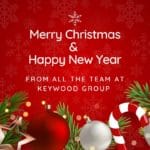What are the various types of Business Insolvency?
Business insolvency can be a challenging and complex journey, especially for entrepreneurs and business owners. Understanding the types of insolvency is crucial for making informed decisions and potentially mitigating the impact on stakeholders. In this article, we will delve into the key types of business insolvency.
Financial Distress and Recognising Early Warning Signs:
-
- The initial stage involves recognising signs of financial distress, such as cash flow problems, mounting debts, and difficulties in meeting financial obligations.
- Business owners should proactively assess their financial health and seek professional advice if warning signs emerge.
Seeking Professional Advice:
-
- Engaging with insolvency practitioners or financial advisors is a critical step when facing financial difficulties.
- These professionals can assess the situation, provide guidance on available options, and help formulate a strategy to address the issues.
Informal Agreements and Restructuring:
-
- At this stage, businesses may attempt to negotiate informal agreements with creditors or embark on a restructuring process to stabilize their financial position.
- Informal arrangements can include renegotiating payment terms or debt restructuring.
Company Voluntary Arrangement (CVA):
-
- If informal negotiations prove insufficient, a company may consider a Company Voluntary Arrangement (CVA).
- A CVA is a formal agreement between the company and its creditors, outlining a repayment plan while allowing the business to continue operating.
Administration:
-
- Administration is a formal insolvency process aimed at rescuing the business as a going concern or maximizing returns to creditors.
- An administrator is appointed to manage the company’s affairs, and during this period, a restructuring plan may be implemented.
Liquidation:
-
- If rescue attempts fail, the business may proceed to liquidation, either voluntarily or through a compulsory winding-up order.
- Liquidation involves selling the company’s assets to repay creditors, and the company ceases trading.
Creditors’ Voluntary Liquidation (CVL):
-
- In a CVL, initiated by the directors and shareholders, a liquidator is appointed to sell assets and distribute proceeds to creditors.
- The company is then formally dissolved.
Compulsory Liquidation:
-
- Compulsory liquidation occurs through a court order typically initiated by creditors.
- A court-appointed liquidator oversees the process, and the company is dissolved after the liquidation is complete.
Bankruptcy for Sole Traders and Partnerships:
-
- Sole traders and partnerships experiencing insolvency may face bankruptcy proceedings.
- Personal assets of the individual or partners may be used to settle business debts.
Conclusion
Navigating the stages of business insolvency requires a proactive approach, professional advice, and a clear understanding of the available options. Business owners should be diligent in recognising early warning signs, seeking assistance, and carefully considering each stage to make informed decisions that align with the best interests of stakeholders.
Insolvency Practitioners
Keywood Group is a firm of Licensed Insolvency Practitioners with offices based in Birmingham and London. Please get in touch for a free consultation by calling us today on 0121 201 0399 or 0208 912 0399











